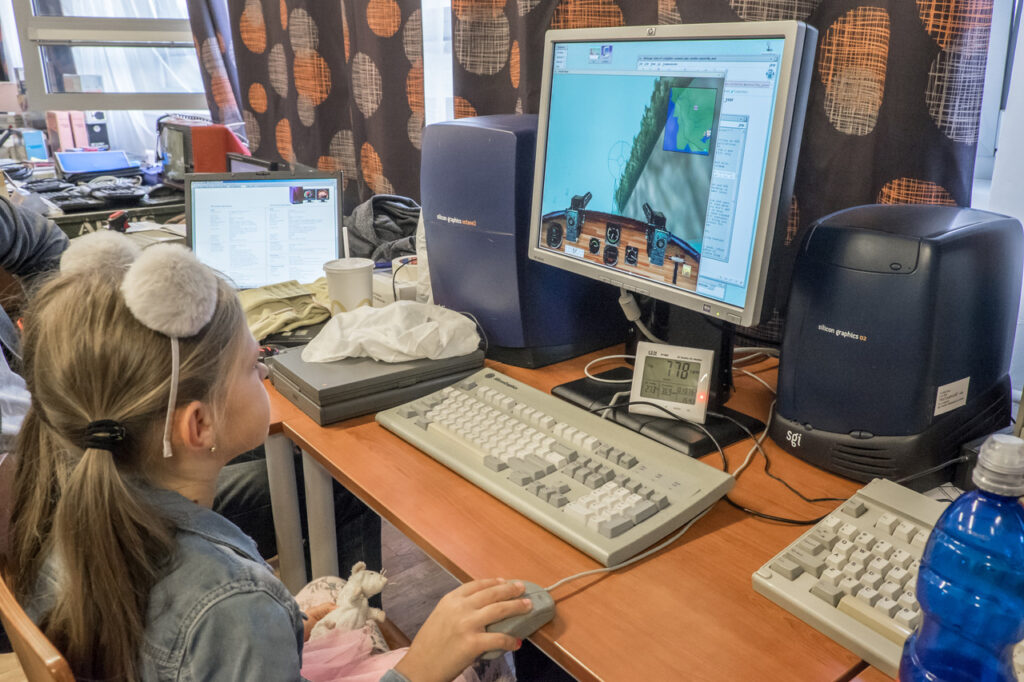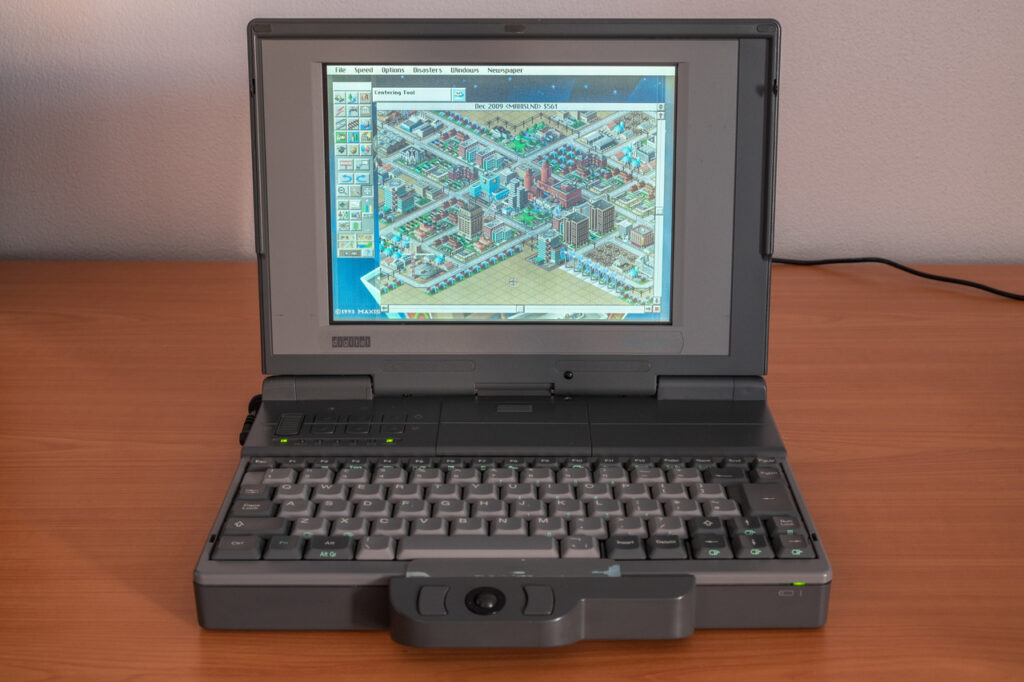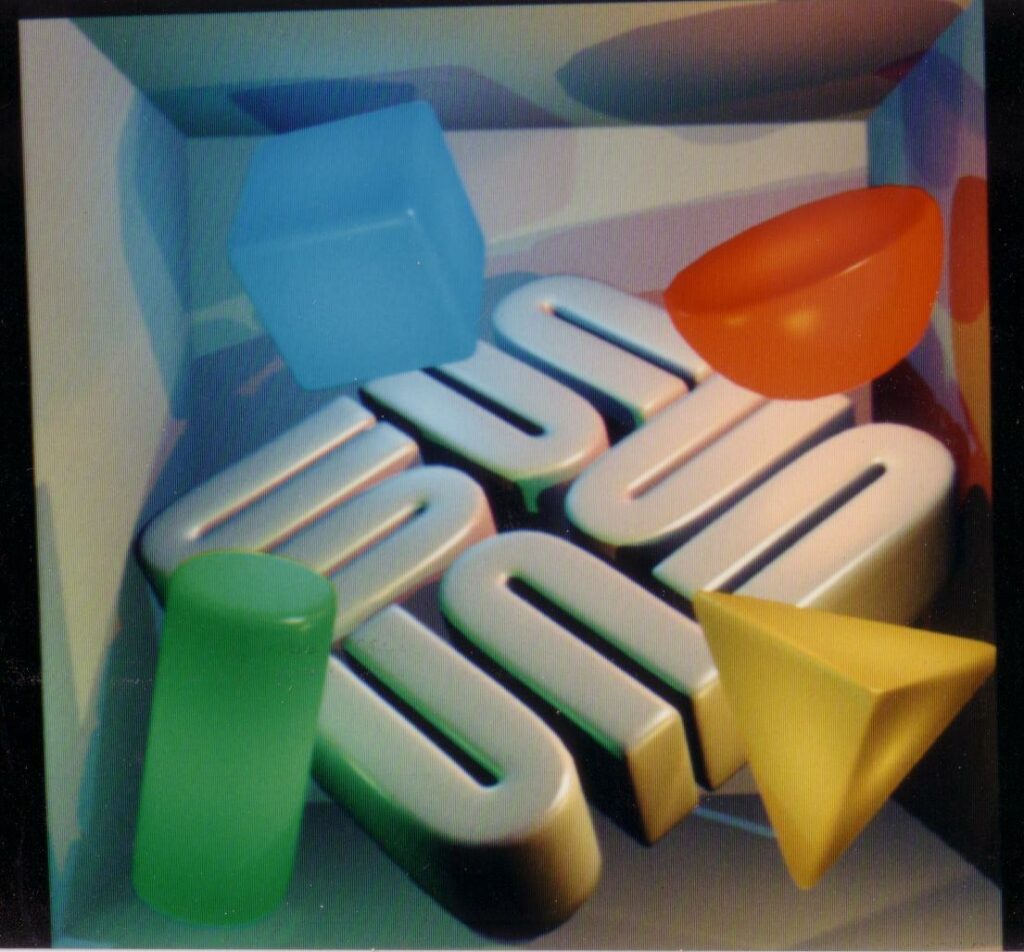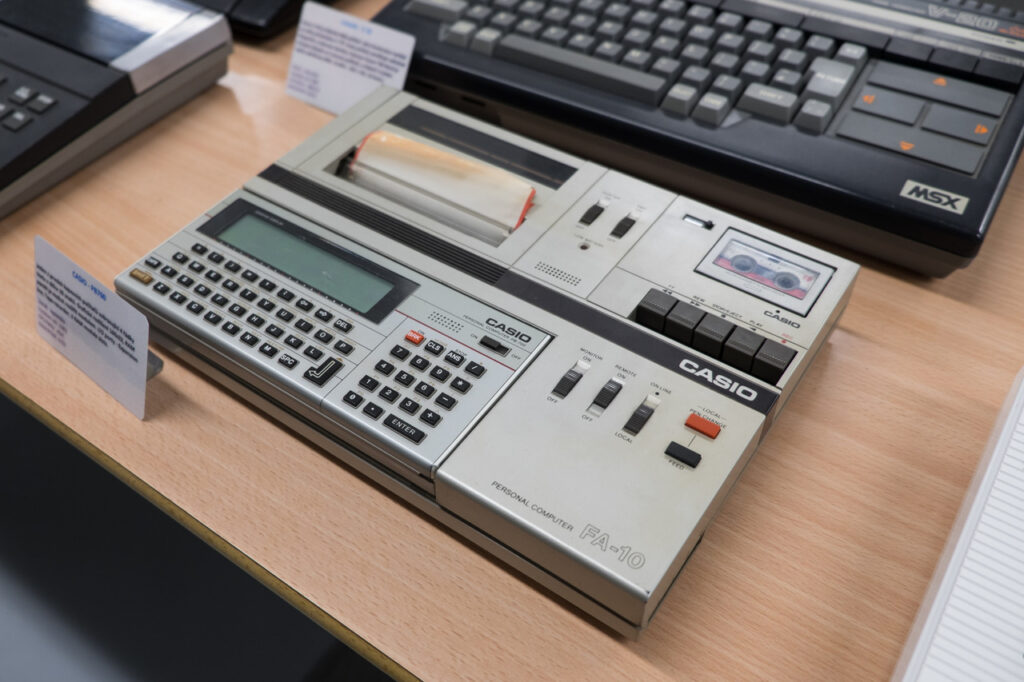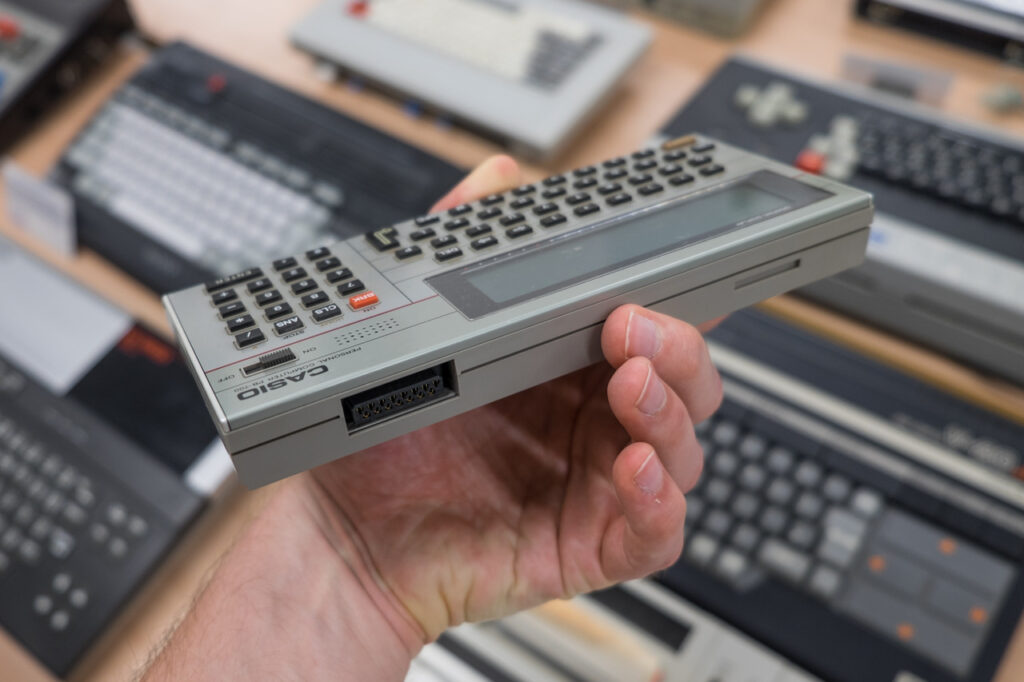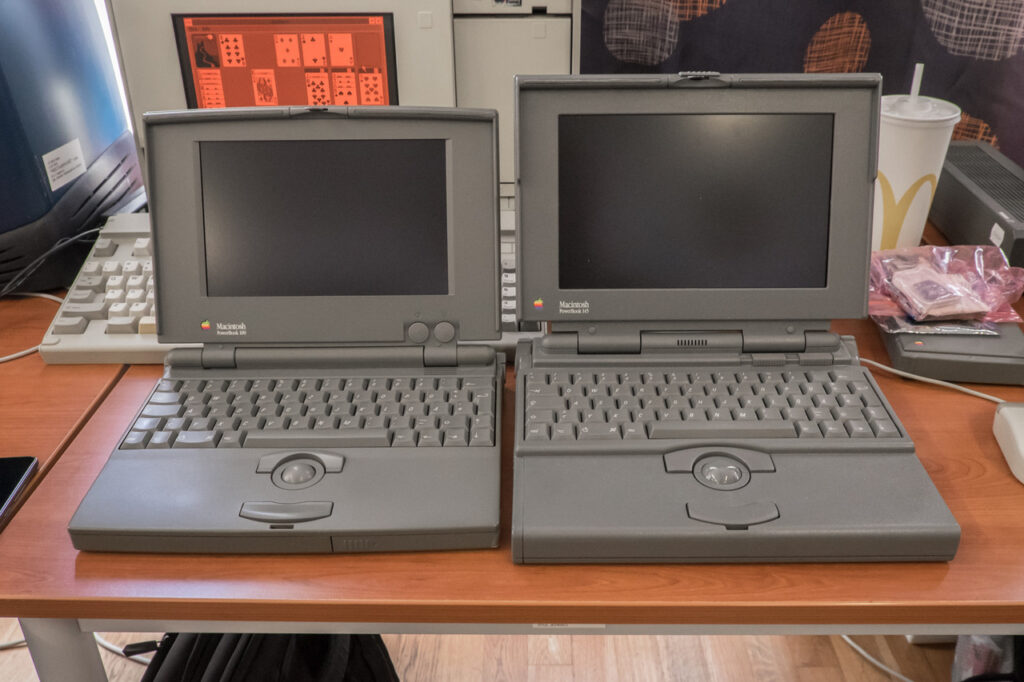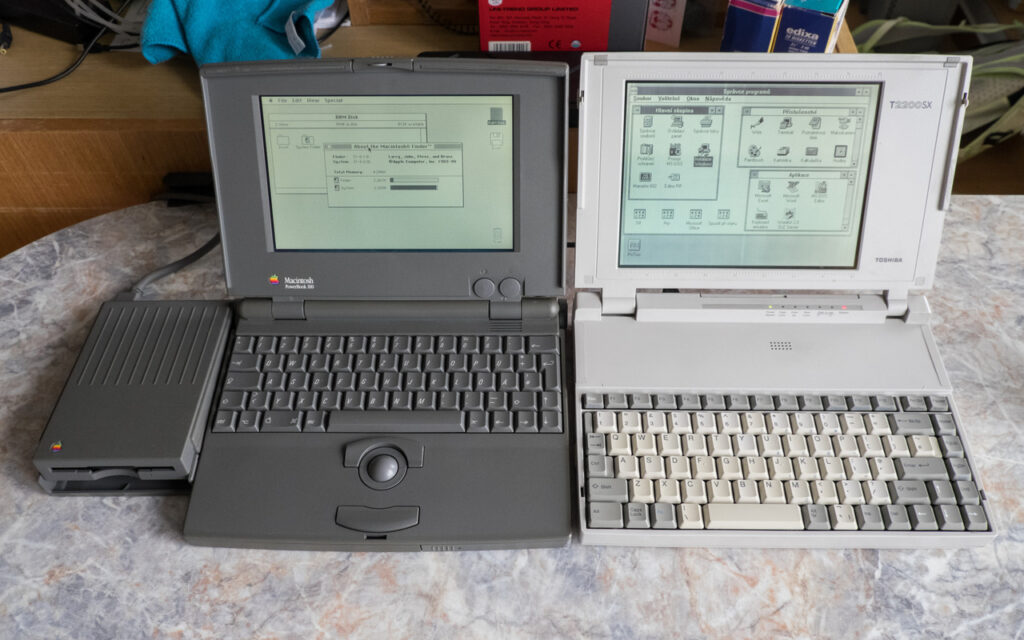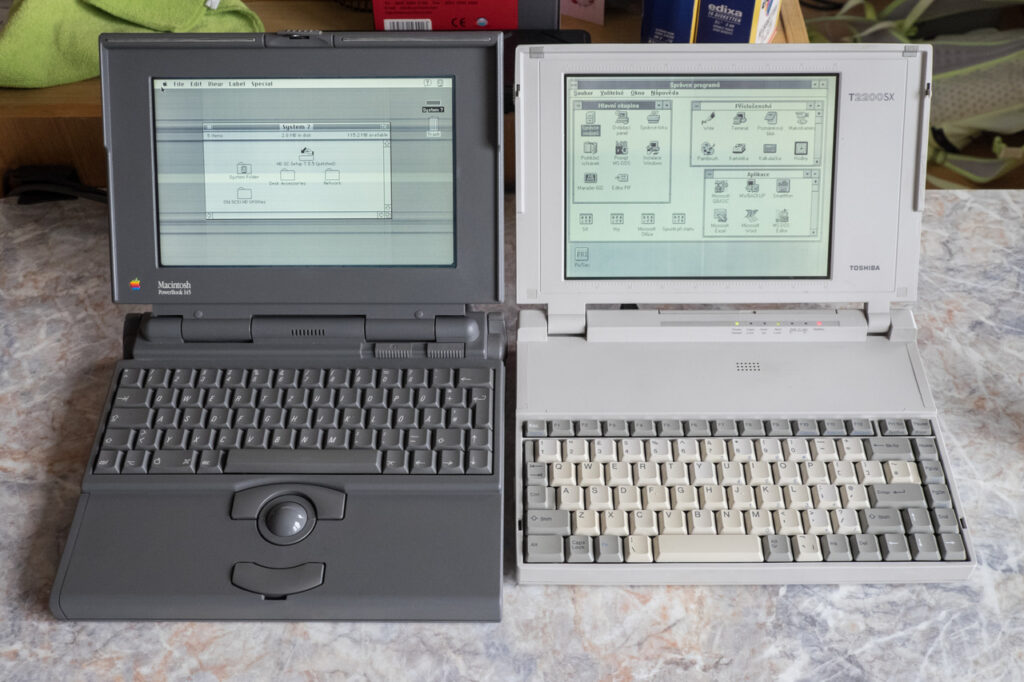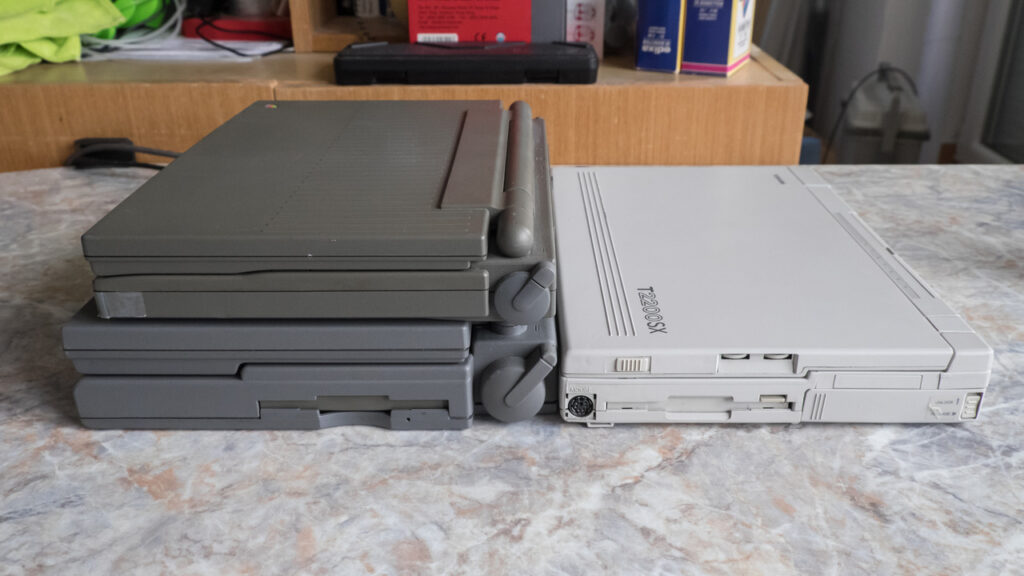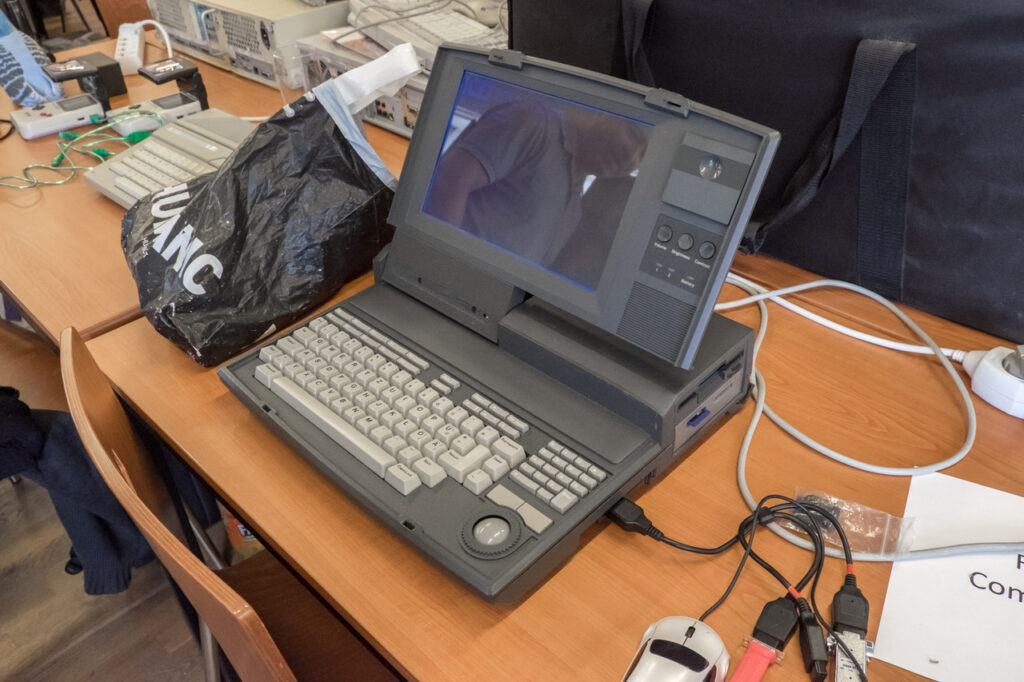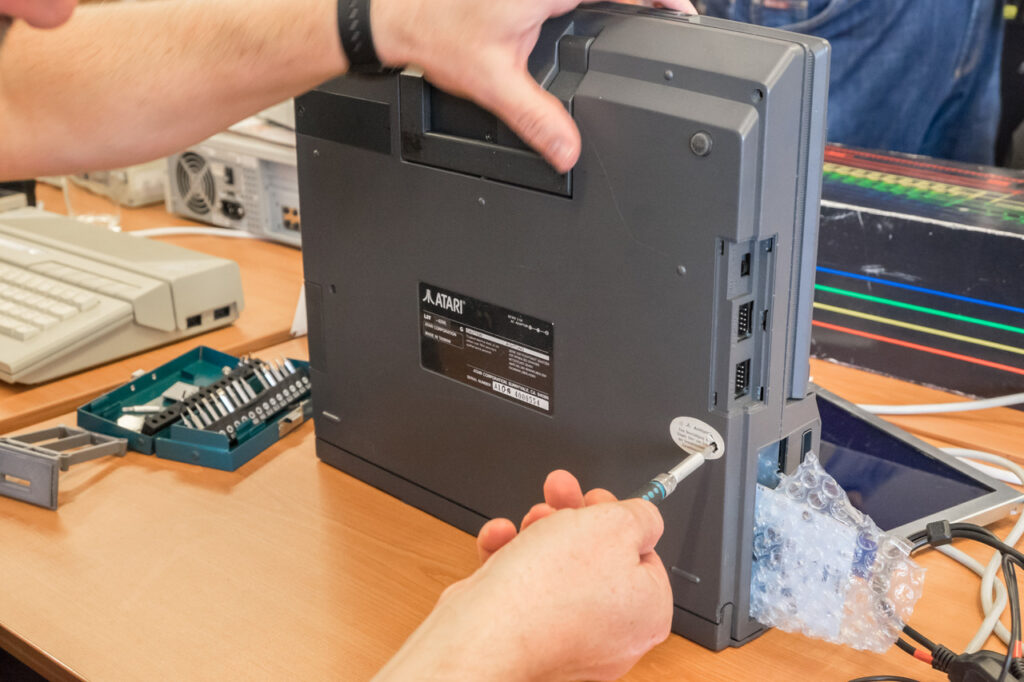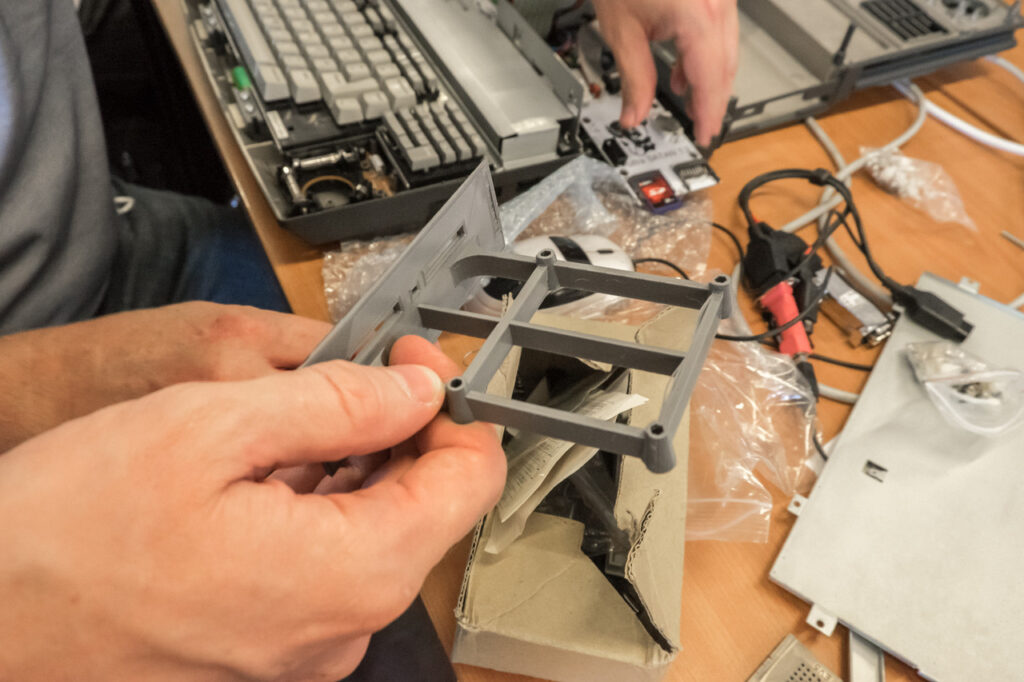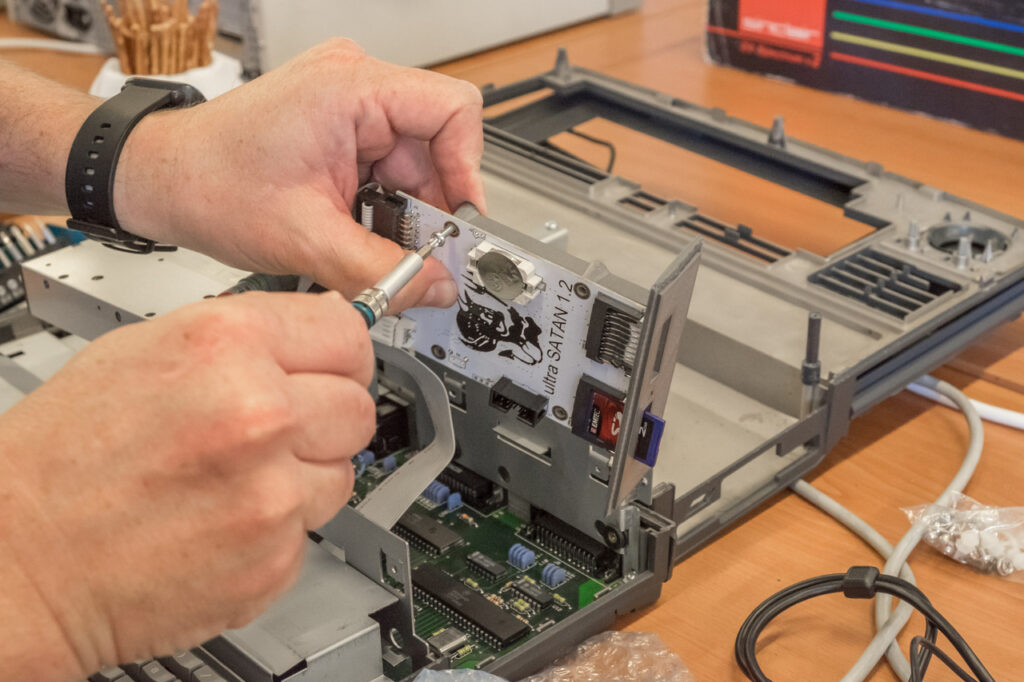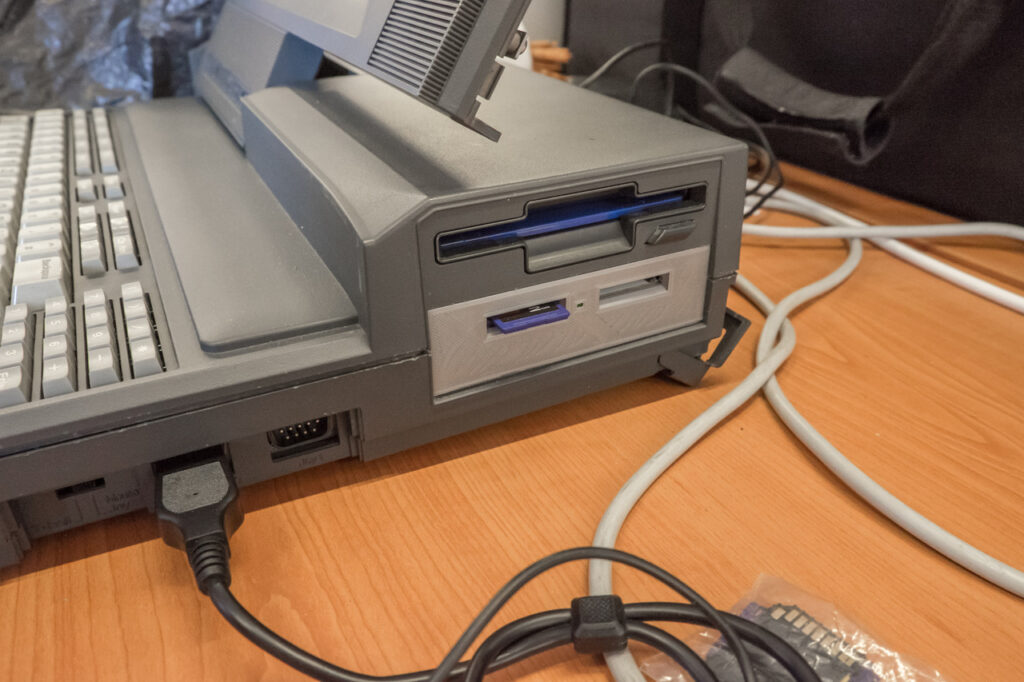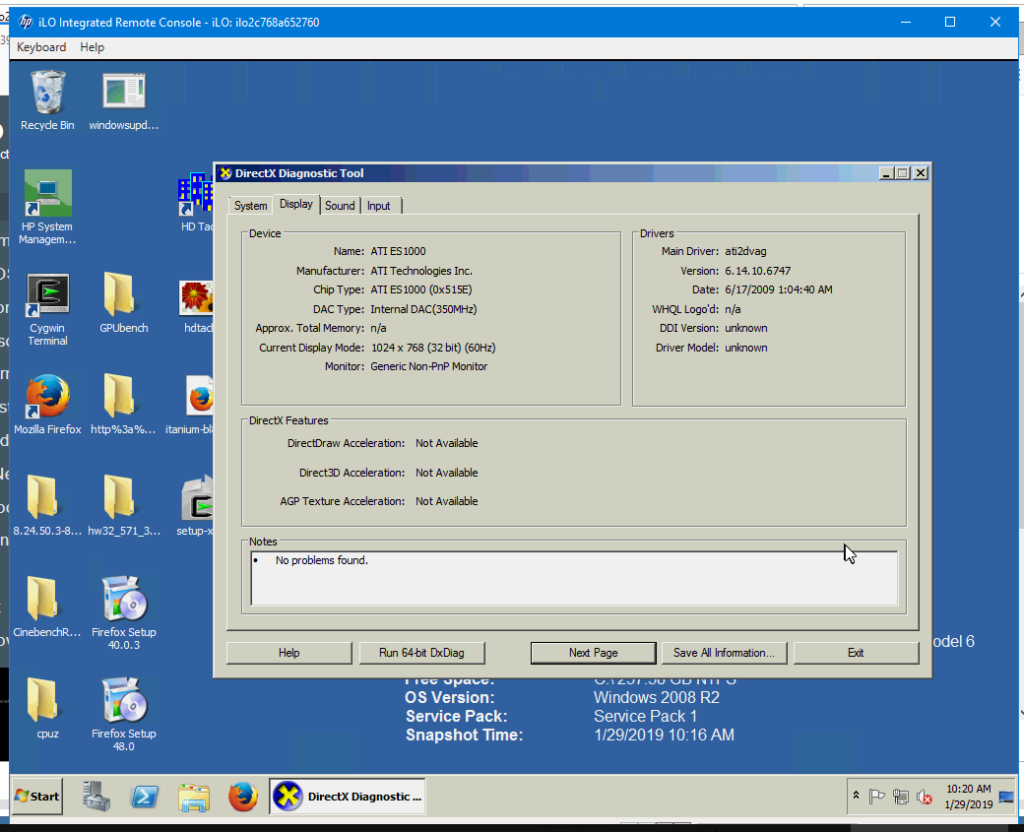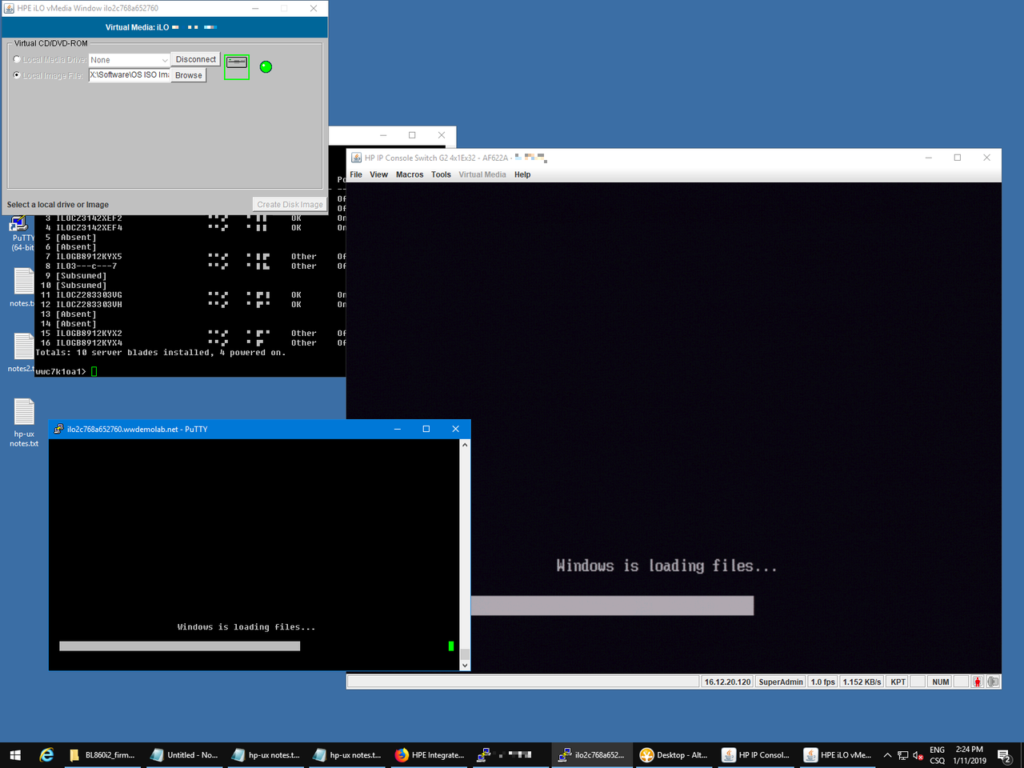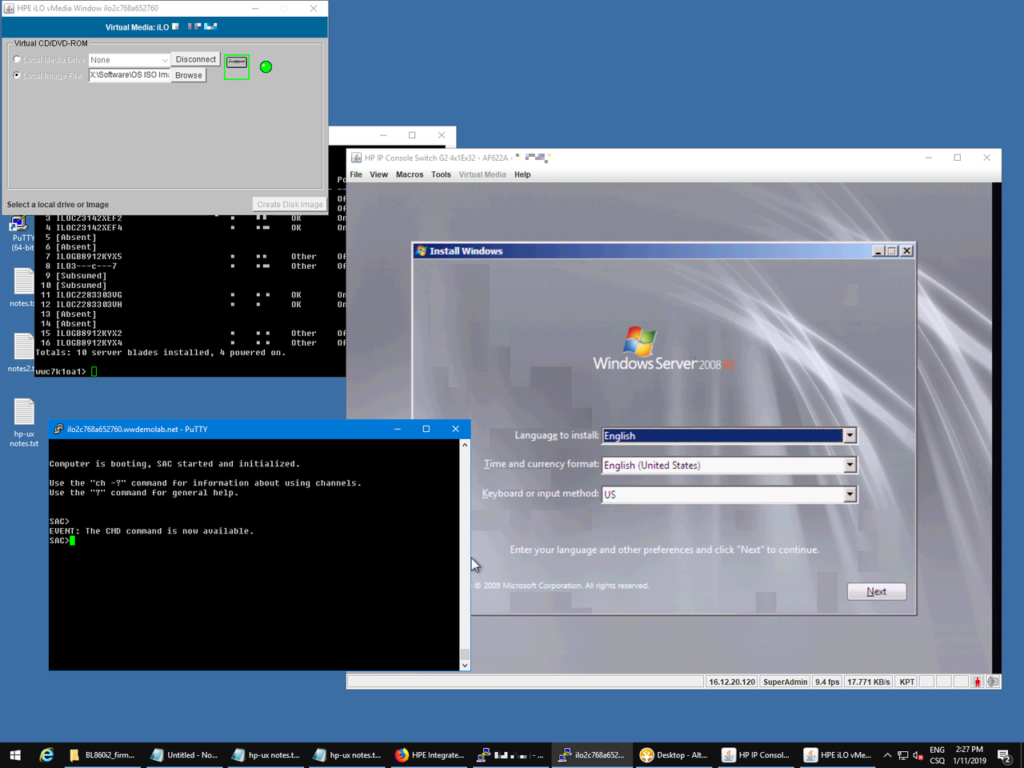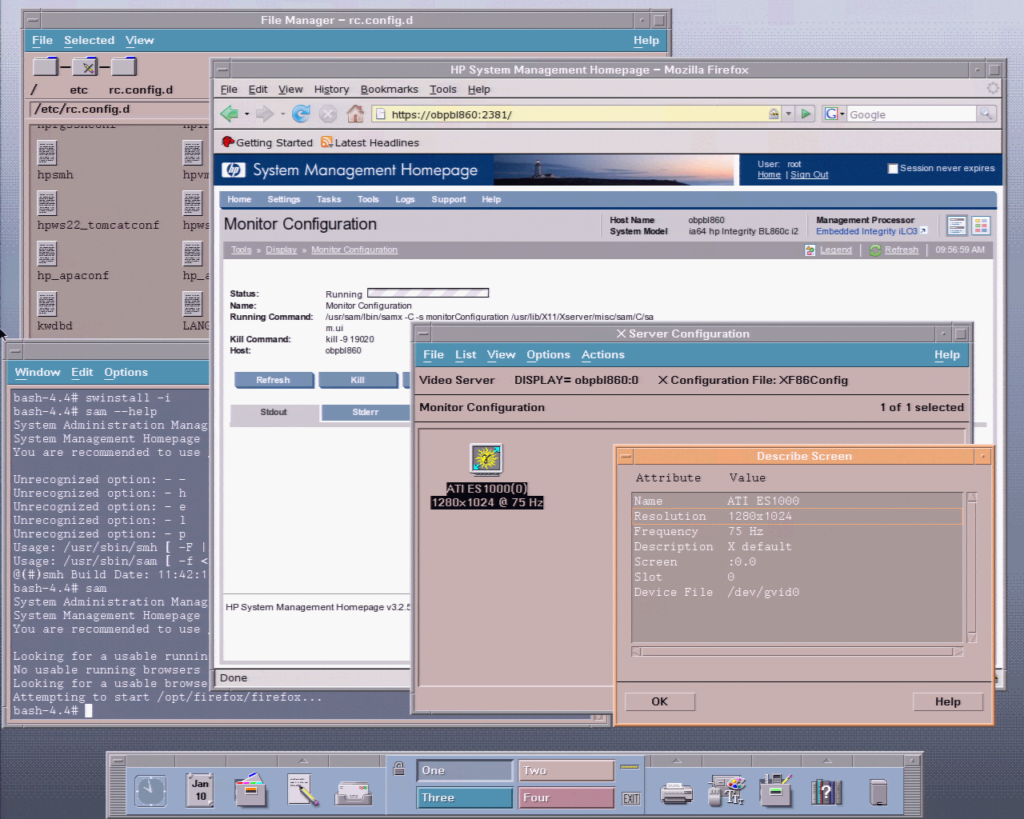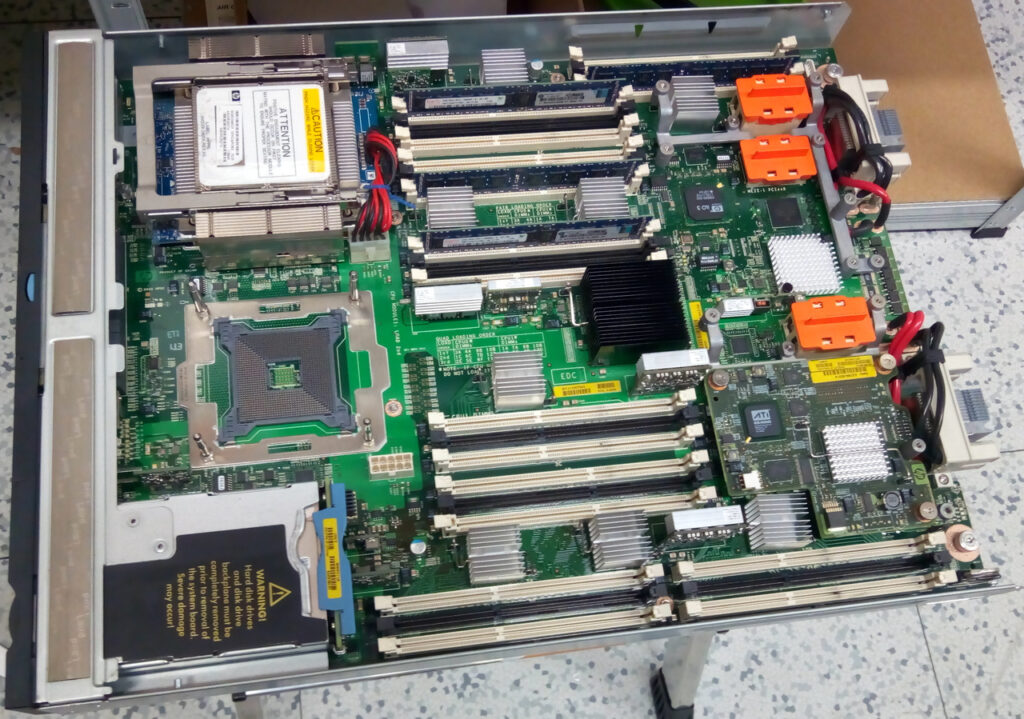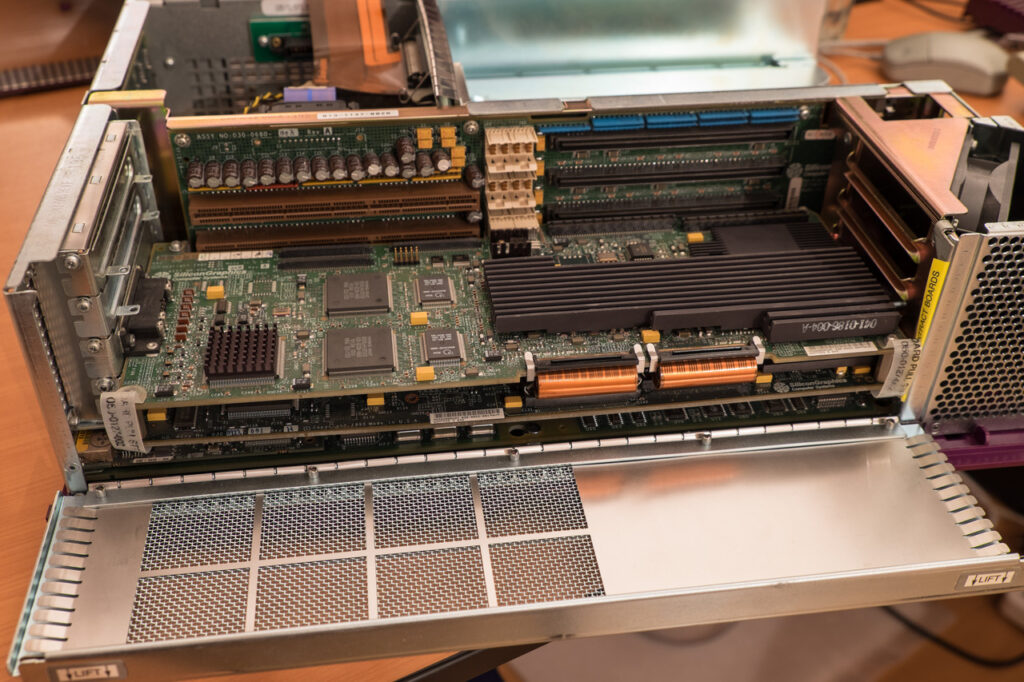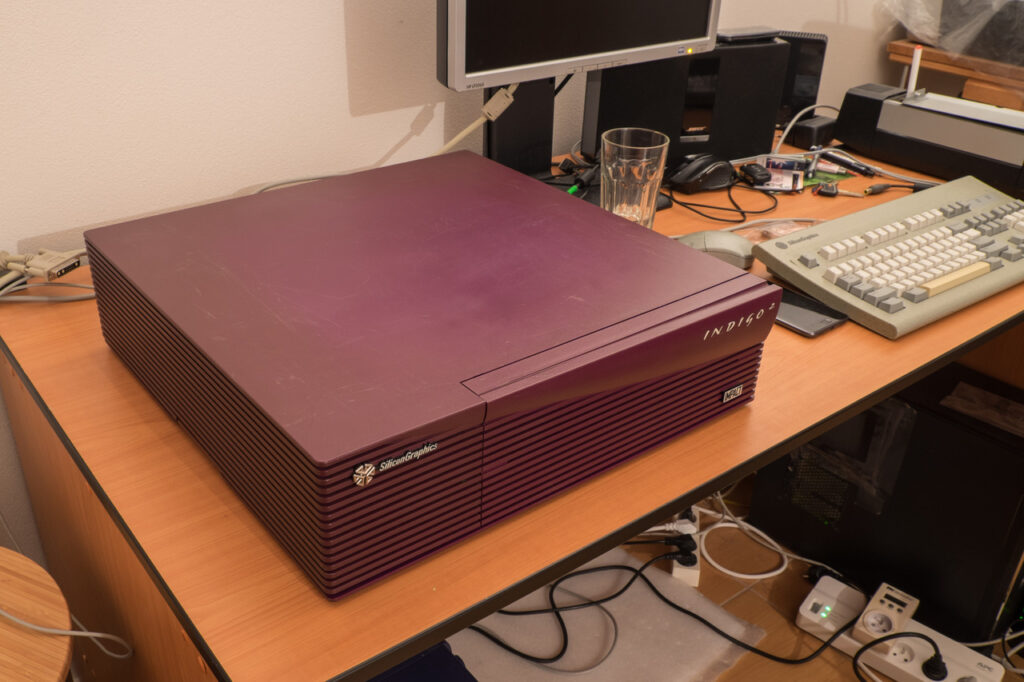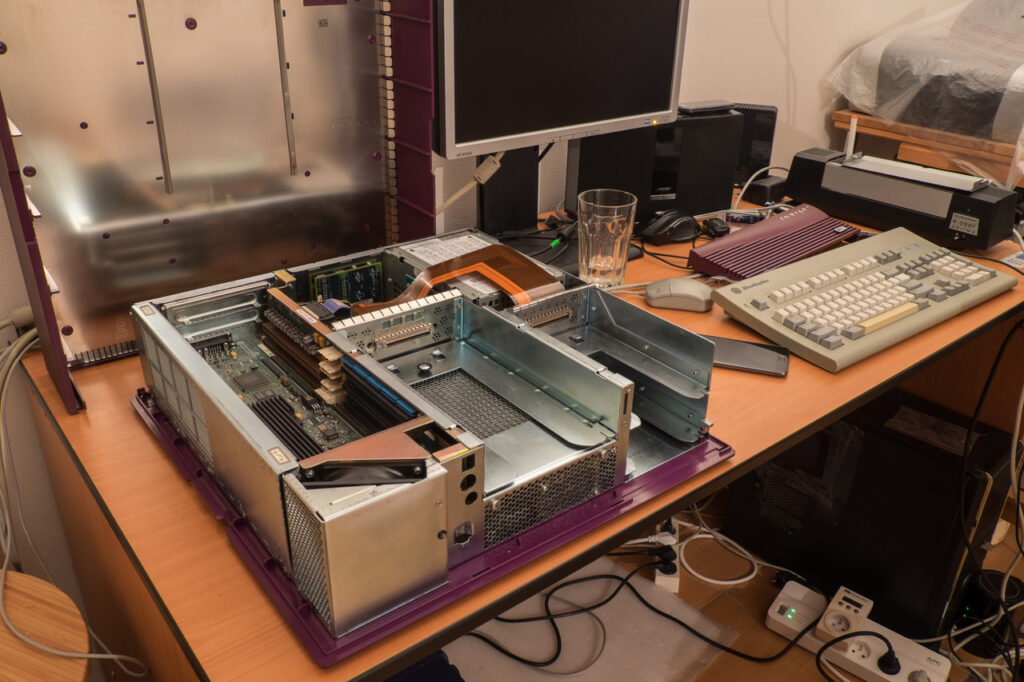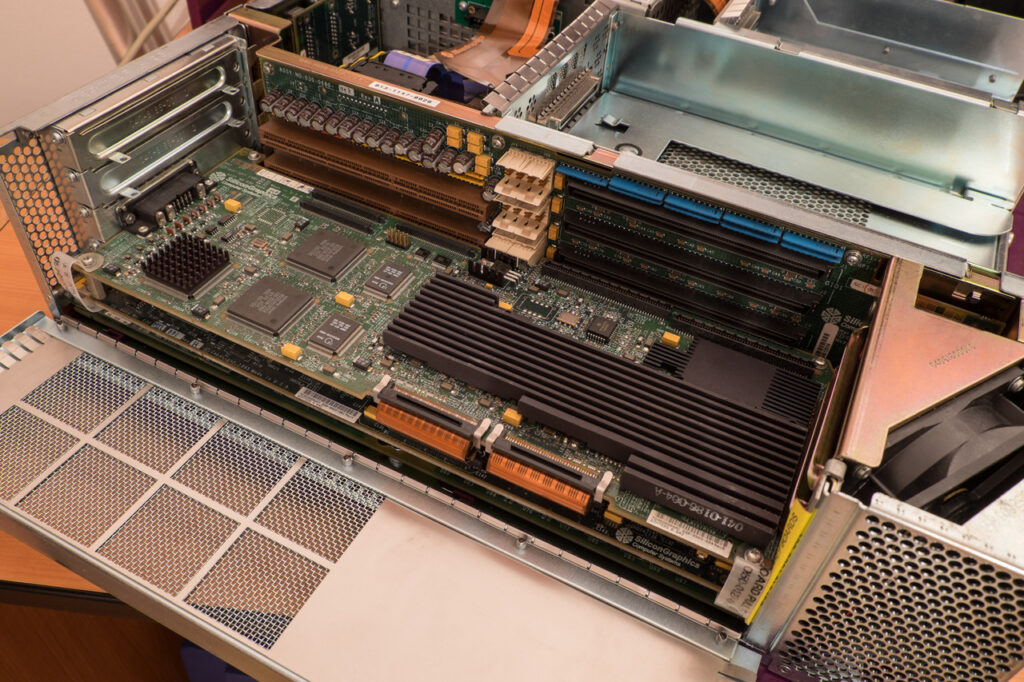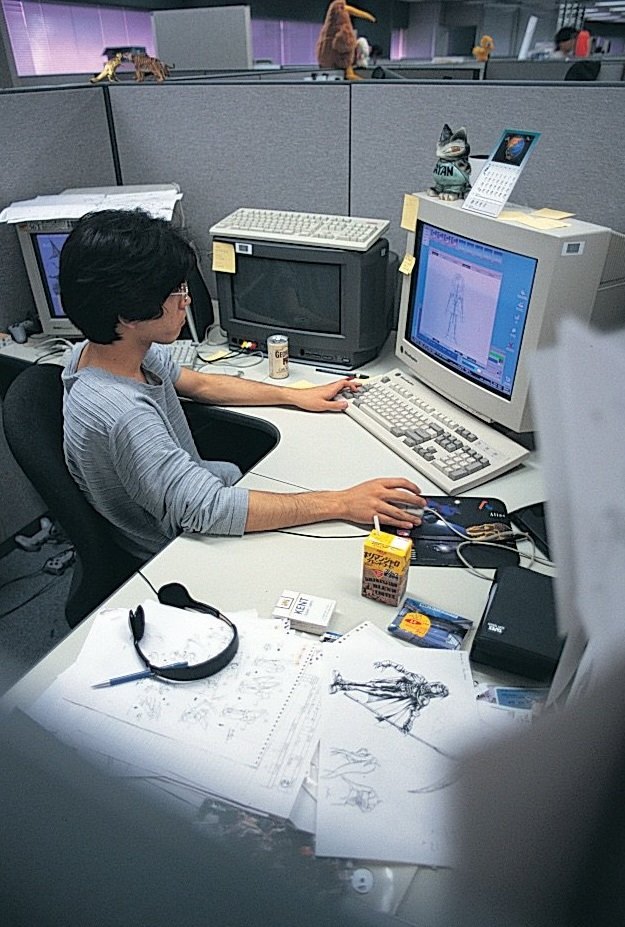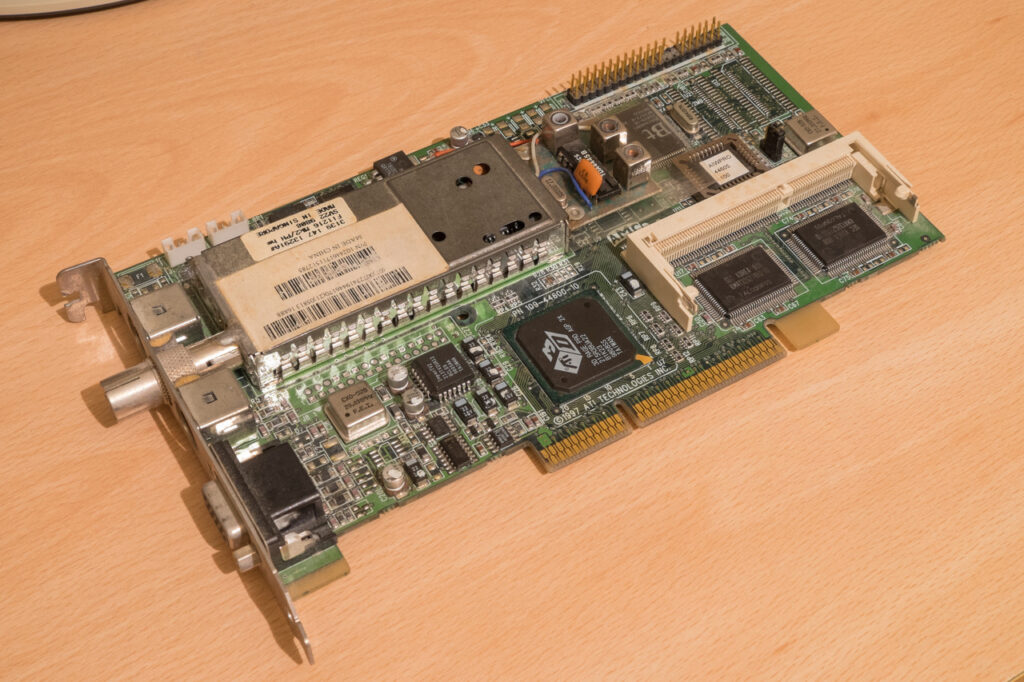Blog
DECpc 325SLC & SimCity 2000
SimCity 2000 running on DECpc 325SLC (both from 1993) – This 25-MHz 386SL laptop was available with a color passive-matrix screen and thanks to its Western Digital graphics chip (512kB video RAM) it could handle 256 colors in a resolution of 640×480 (required by the game).
Not bad for a laptop that cost only about $2,100 when released.
Trancept Systems TAAC-1 (1987)
TAAC-1 is an interesting and little-known piece of history. Its creators call it the first board-level GPGPU (a programmable graphics card). This thing was designed to accelerate scientific and medical visualization. It could render 30,000 3D Gouraud-shaded and Z-buffered polygons per second. In addition to that, it could also be programmed to accelerate volumetric rendering and ray tracing. The board could even be programmed in C and allowed to do more than just graphics.
The large double-plane VME board filled three slots and a half of it was covered with memory chips. There were 8MB of frame-buffer memory and the 200bit GPU logic ran at 8MHz, producing up to 1024×1024 pixels in true color. TAAC-1 was used with Sun 3 systems based on Motorola 68020 (16.67MHz).
Trancept Systems Inc. was founded in 1986 by three people. One of them was Tim Van Hook. The same person that later worked for SGI as a Principal Engineer (the architect of Nintendo 64) and started a company called ArtX (Nintendo GameCube graphics hardware), which was acquired by ATI in 2000.
Demo video: part1, part2
More info: virhistory.com, obsolyte.com
CASIO PB-700 (1983)
It maybe looks like a calculator, but it is a fully-featured ultra-mobile computer from the early 80s. Weighing just 315 grams, It has a custom 8-bit CPU, up to 16kB of RAM, built-in BASIC and display with a resolution of 160×32 pixels (20×4 characters). The machine can be expanded with some sort of a docking station that adds a four-color plotter and tape storage.
50-line text mode on a gas-plasma screen
I took this photo while working on the MS QuickBasic version of our benchmark (previously written in C and Assembly). The goal was to compare speed of different languages and compilers. This required me to relearn BASIC so I always needed to see online help, my BASIC code and the original C code on a single screen. Switching a screen into the VGA 80×50-character mode is invaluable in these situations.
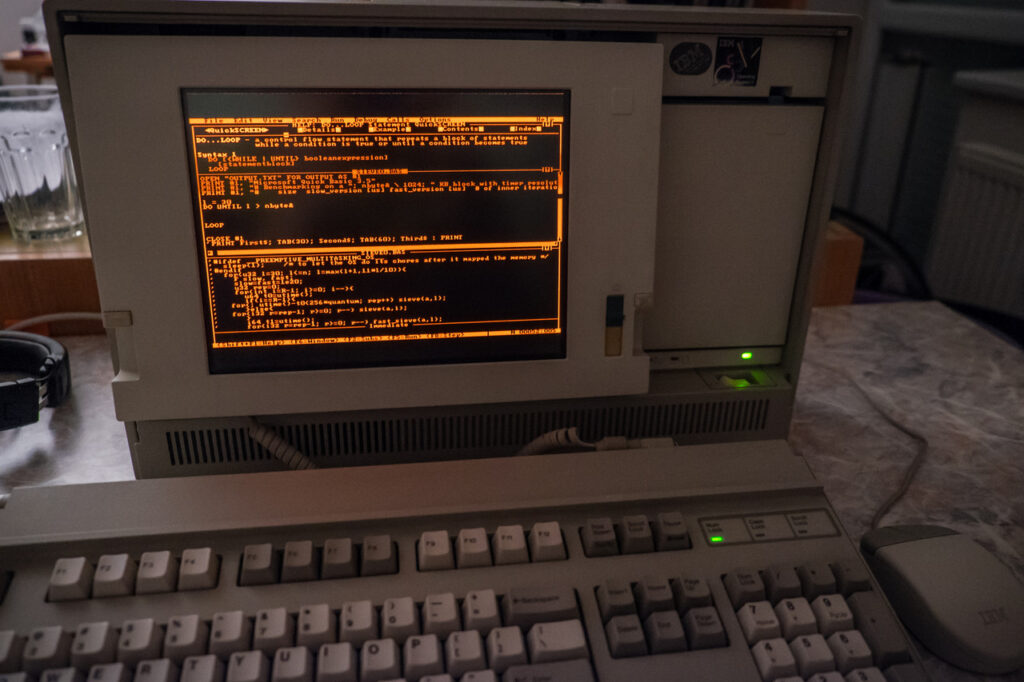
Regarding the results: I tested all versions of our benchmark, which is mostly about integer performance and memory access (similar to compiling and XML parsing), on this IBM PS/2 P70 with a 20-MHz 386 (DX). Interpreted QuickBasic 4.5 version was used as a baseline (1x). These are the speed-ups:
- Compiled QuickBasic = 3x
- Borland C++ (8086 instructions) = 15x
- Borland C++ (386 instructions) = 33x
- Hand-tuned Assembly (386 protected mode) = 70x
- Metaware High C/C++ (386 protected mode) = 70x
Early Apple Macintosh PowerBooks
PowerBook 100 has a special place in my heart. I had one back in the 1990s and I loved its big trackball, comfortable keyboard and proper palmrest area – features that were not present in typical PC laptops. Other early PowerBooks were not as small and light as the PowerBook 100, but they shared many design decisions with it. I perfectly understand people who bought and used these computers when they were new. On the other side, I cannot agree with those who see early PowerBooks as universally superior machines to PC notebooks. That’s just not true.
From time to time, I see nonsense statements like that PowerBooks were the first laptops with stereo sound, optical drives, docking stations or other features. Not sure at the moment, but I think that you can find some of these statements even on Wikipedia. However, all of these features were previously available in PC laptops.
In fact, the generations of early PowerBooks that came after the first generation were not considered very innovative back then. Just a few examples:
- Support for gray-scale video modes on internal screens was added at the end of 1992. Until that, it was possible to run only programs that were written to work with the black and white mode. All VGA-equipped PC laptops supported gray scale and could also translate colors into levels of grey in hardware (no OS or program support was required).
- Unlike with PC laptops, there was no support for features like color LCD screens, PCMCIA expansion cards and microprocessors with built-in power management capabilities in 1992.
- There was no graphics acceleration in Apple’s video circuits which resulted in significantly slower screen redraw. This started to be a problem when Apple offered PowerBooks with color screens where the graphics core had to process far more data. The first color PowerBooks with competitively fast graphics chips were available after Apple started to use generic PCI solutions from the PC world (mostly Chips & Technologies, later ATI).
- Many of the PowerBook graphics chips didn’t support more than 256 colors on external screens even in 1994. Lower-end machines didn’t even have a video output for an external screen.
The first color TFT PowerBook – 180c – was released in August, 1993 – almost a year after major PC brands released their first TFT portables. The PowerBook 180c was equipped with a small 8.4-inch 640×480 screen when PC laptops often used 9.5-inch screens and there were some with even 10.5-inch screens (like the famous IBM ThinkPad 700C – December, 1992). That was not the only issue – it lasted only about an hour on one charge because (unlike PC laptops) it didn’t have a 3.3V CPU, advanced power management features and NiMH batteries.
Heat and power consumption was so big issue with Motorola 68040 that Apple had to release 040-based PowerBooks with a version of the CPU that didn’t have a math coprocessor. Thus, programs that used it heavily were twice as fast when running on the previous generation of high-end 030-based PowerBooks. 486DX-based PC laptops could run the same code four times as fast.
The machines on the photos:
(1) Apple PowerBook 100 (1991), 16-MHz 68000, 4MB RAM, 20MB HDD
(2) Toshiba T2200SX (1991), 20-MHz 386SX, 4MB RAM, 60MB HDD
(3) Apple PowerBook 145 (1993), 25-MHz 68030, 8MB RAM, 80MB HDD
Fun With Intel Itanium
It might be surprising for somebody, but Itanium-based systems are still being used today. You cannot see them in a form of a standard office PC though. They are hidden in large datacenters, doing some serious stuff running on HP-UX or OpenVMS.
I have one HP Integrity BL860c i2 blade server (manufactured in 2010) in our lab and there was recently some time to play with it a bit. I played a lot with HP-UX before (even with PA-RISC machines) so the obvious next step was to install the last version of Windows Server for Itanium. It has a built-in x86 emulator written by guys from Intel and it is possible to transparently run standard 32bit x86 applications along with native ones. It is not very different from current ARM-based Windows devices.
Some simple emulated applications can achieve 50-70% of CPU performance. However, other applications (especially those with GUI) are super-slow. It takes ages to load a web page in emulated Firefox. The quad-core 1.33-GHz Itanium 9320 received only 0.38 pts in the Cinebench R11.5 multi-threaded test (32bit x86, 8 threads). That is similar to a single core of a five years old in-order Intel Atom processor.
It was expected to access Windows Server 2008 (R2) for Itanium no other way than using RDP. Therefore, there is literally no graphics acceleration implemented in the ATI driver (the chip is based on the ATI Radeon 7000 core).
The support for Itanium in Windows was discontinued in 2010.
SGI High IMPACT Graphics (1995)
SGI Indigo2 IMPACT systems were the best workstations for game development and other activities involving textured 3D rendering in 1995. My system is equipped with High IMPACT Graphics, which is a two-card solution with a dedicated geometry engine (one million triangles/s), raster engine with two pixel processors (two pixel per cycle, 60-70 textured Mpixels/s), 12MB of pixel memory and a single texture-mapping unit with its own 1MB of texture memory.
The high-end option was called Maximum IMPACT Graphics. It took three slots in the computer and doubled the rasterisation performance by using exactly the same principle that was later used by 3Dfx Voodoo2 SLI (scan line interleaving).
The 3D performance of SGI Indigo2 IMPACT was years ahead of PCs and other workstations. In fact, 3Dfx Voodoo2, the best gaming 3D accelerator for PCs in 1998, had similar performance to High IMPACT graphics but unlike the IMPACT series, it didn’t support windowed rendering, 32-bit color precision and high resolutions.
The last two photos show Indigo2 IMPACT systems during the development of Final Fantasy VII (source: Sony press kit).
GPUbench results – compare the SGI Maximum IMPACT performance with other 3D accelerators of the same era.
ATI All-in-Wonder PRO (1997)
I was a big fan of All-in-Wonder cards back in the late-90s. ‘Multimedia’ was a big thing back then and ATI responded with the concept of a single card combining 2D/3D/video acceleration, TV-in/out and a TV tuner. This card allowed me to record and encode full PAL resolution in real time on a standard 266-MHz Pentium II PC. This one was based on the ATI Rage Pro chipset so it was not very good for 3D games. In following years, I had also All-in-Wonder cards based on Rage 128 Pro, Radeon and Radeon 8500DV. The last of them added also two Firewire 400 ports and a remote control. I loved it.
There is no demand for such things today. Almost nobody cares about the built-in TV input capability in PCs. In 2010, it was possible to buy a multimedia laptop with an integrated TV tuner and remote control. There were plenty of them (especially with 17.3 and 18.4-inch screens), but there is none today.
